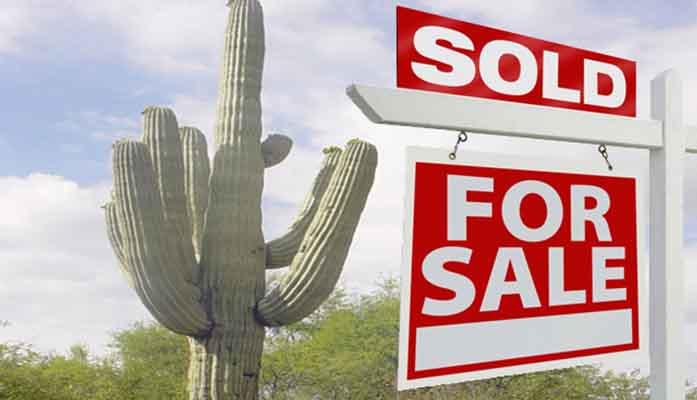
by Jonathan Eberle | Aug 17, 2025 | Economy, News
By Jonathan Eberle |
Main Street confidence ticked upward in July, with the NFIB Small Business Optimism Index rising 1.7 points to 100.3, edging above its long-term average for the first time in months. The lift was driven largely by more owners reporting better business conditions and viewing it as a good time to expand.
The latest figures, however, paint a mixed picture. While sentiment improved, NFIB’s Uncertainty Index climbed eight points to 97, and labor quality has re-emerged as the top challenge, cited by 21% of owners, the highest share since early spring.
Survey results show growing confidence in day-to-day operations. Thirteen percent of owners rated their business health as “excellent,” up five points from June, and 52% said it was “good,” up three points. Reports of “fair” or “poor” conditions declined. Owners’ outlook on the economy also improved: the net share expecting better business conditions jumped 14 points to 36%, well above historical norms. Sixteen percent said it is a good time to expand, up from 11% last month.
Even with the improved outlook, sales remain a point of concern. Eleven percent named poor sales as their most pressing problem — the highest since February 2021. Inflation worries held steady at 11%, the lowest level since September 2021, though 28% plan to raise prices in the months ahead, a sign that cost pressures persist.
Worker shortages remain acute. Thirty-three percent of owners reported job openings they could not fill, the lowest since December 2020 but still well above average. Of those hiring, 84% said they had few or no qualified applicants. Plans to boost pay are cooling: 27% reported raising compensation in July, down six points, and 17% plan to do so in the next three months. Labor costs were named the top concern by 9% of respondents.
Capital investment showed modest improvement. Fifty-five percent of owners reported spending in the past six months, with the largest share buying new equipment. Still, plans for future capital outlays remain below long-term averages. Borrowing conditions are relatively stable, with only 4% saying their last loan was harder to get. Interest rate concerns remain low, though 25% of owners borrow regularly — a historically small share.
Jonathan Eberle is a reporter for AZ Free News. You can send him news tips using this link.

by Ethan Faverino | Aug 16, 2025 | Economy, News
By Ethan Faverino |
Congressman Andy Biggs (AZ-05) has introduced a resolution in the U.S. House of Representatives formally recognizing America’s escalating national debt as a direct threat to national security.
As the national debt surpassed $36.2 trillion in January 2025, with the fiscal year 2024 interest expense exceeding $1.13 trillion, Congressman Biggs is urging Congress to confront the growing fiscal crisis head-on.
The resolution highlights the severity of the debt crisis, noting that the total public debt reached 120.87% of GDP in January 2025, equating to $104,780 per citizen and $323,045 per taxpayer.
It points to the federal government failing to produce a balanced budget since 1997, with the fiscal year 2024 resulting in a $1.86 trillion deficit due to federal outlays of $6.94 trillion.
The resolution warns that continued reliance on raising the debt ceiling and bypassing regular order in the appropriations process undermines fiscal responsibility and congressional oversight.
The resolution also references warnings from former national security leaders, including Secretary of Defense James Mattis, Director of National Intelligence Dan Coats, and Chairman of the Joint Chiefs of Staff Michael Mullen, who have all emphasized the national debt’s threat to military and economic security.
Congressman Biggs, who has introduced this resolution in previous Congresses, remains steadfast in advocating for fiscal discipline. He has also proposed a balanced budget amendment to the U.S. Constitution to enforce long-term fiscal responsibility.
“The federal government’s wasteful spending spree is unsustainable and is inching us ever closer to a fiscal cliff,” said Biggs. “Our reckless spending habits will enable our adversaries to surpass us on the global stage and constrain our ability to defend our nation in the face of attack. It is past time for Congress to be serious about balancing the nation’s budget and making significant cuts to federal spending, lest we pin a $70 trillion debt on our children and grandchildren’s shoulders. Relying on continuing resolutions year after year is lazy legislating. Raising the debt ceiling every year is a cop out. American voters elected us to enact President Trump’s America First priorities through responsible budgeting, not to maintain the status quo. My resolution acknowledges that Washington has a spending problem and calls to restore regular order to the appropriations process.”
Congressman Biggs’ resolution and amendment are backed by cosponsors across the country, including Rep. Byron Donalds (R-FL), Rep. Paul Gosar (R-AZ), Rep Daniel Webster (R-FL), Rep. Dan Newhouse (R-WA), and Rep. Keith Self (R-TX).
Ethan Faverino is a reporter for AZ Free News. You can send him news tips using this link.

by Ethan Faverino | Aug 14, 2025 | Economy, News
By Ethan Faverino |
Intel Corporation is under fire following its receipt of significant funding from the CHIPS and Science Act, followed by recent job cuts nationwide and hiring a new CEO with ties to the Chinese Communist Party (CCP).
In November of 2024, the U.S. Department of Commerce finalized $7.86 billion of taxpayer dollars to Intel under the CHIPS and Science Act to support semiconductor manufacturing and advanced packaging projects in Arizona, New Mexico, Ohio, and Oregon.
This funding, part of a broader $100 billion investment plan by Intel, was intended to boost U.S. semiconductor production, create thousands of jobs, and enhance national security by reducing reliance on foreign supply chains.
In Arizona, the award was expected to support the construction of two new fabrication plants and the modernization of an existing facility at Intel’s Ocotillo campus in Chandler, creating 3,000 manufacturing jobs and over 6,000 construction jobs.
However, Intel’s announcement in August 2024 of a global workforce reduction of approximately 15,000 jobs, including 400 at its Chandler facility, has raised concerns about the alignment of these cuts with the CHIPS Act’s goal of fostering U.S. job growth.
The layoffs, part of a $10 billion cost-cutting plan prompted after a $1.6 billion net loss in Q2 2024, face criticism as Intel continues to benefit from taxpayer-funded incentives.
President Trump addressed these concerns about national job loss and a new CEO, saying, “The CEO of INTEL is highly CONFLICTED and must resign, immediately. There is no other solution to this problem. Thank you for your attention to this problem!”
This has gotten support from other GOP members across the country, with Senator Rick Scott following up, saying, “President Trump is right, Intel owes American taxpayers answers TODAY. Intel accepted tax dollars from the CHIPS Act, and instead of investing in America, they cut jobs in the U.S. and hired a CEO with a cozy relationship to the CCP. The CHIPS Act was intended to benefit America, not our adversaries. Intel should return every dime of this taxpayer funding IMMEDIATELY!”
Ethan Faverino is a reporter for AZ Free News. You can send him news tips using this link.

by Jonathan Eberle | Aug 12, 2025 | Economy, News
By Jonathan Eberle |
Lucid Group, the electric vehicle startup known for its luxury Air sedan, disappointed investors after missing second-quarter earnings expectations and trimming its production forecast for 2025.
The company reported $259.4 million in revenue for the quarter ending June 30, falling short of Bloomberg’s $262.4 million consensus estimate. While that figure marked an improvement over the $200.6 million recorded a year ago, Lucid posted a larger-than-expected adjusted loss of $0.24 per share and an adjusted EBITDA loss of $632.1 million.
Gross margins fell by 21%, which Lucid attributed to tariffs. The company ended the quarter with $4.86 billion in liquidity, a closely watched metric as it continues to burn cash. Production guidance for 2025 was revised to between 18,000 and 20,000 vehicles, down from the 20,000-target set earlier this year. In the April–June period, Lucid produced 3,863 vehicles and delivered 3,309, bringing its first-half totals to 6,075 units produced and 6,418 delivered.
For much of its short history, Lucid’s lineup consisted solely of the Air sedan. The automaker has recently begun ramping up production of the Gravity SUV, though early output has been modest. Fewer than 1,000 units were built in the first quarter, most of which went to Saudi Arabia, home to Lucid’s largest investor, the Saudi Public Investment Fund.
In 2016, the Arizona State government made a deal with Lucid to open operations in Arizona. At that time, the Arizona Republic reported that the company could receive as much as $46.5 million in taxpayer subsidies over time. The company’s primary manufacturing facility remains in Casa Grande, Arizona.
In July, Lucid announced a partnership with Uber to supply 20,000 battery-electric vehicles for a planned robotaxi service over the next five years.
Lucid’s near-term sales outlook also faces headwinds from the expected expiration of the U.S. federal $7,500 EV tax credit on Sept. 30. To bolster its stock price, the company plans a 1-for-10 reverse stock split, which would lift shares to roughly $10 based on current valuations and help avoid the risk of trading below $1. Shares of Lucid (LCID) fell nearly 2% following the earnings announcement.
Jonathan Eberle is a reporter for AZ Free News. You can send him news tips using this link.

by Jonathan Eberle | Aug 11, 2025 | Economy, News
By Jonathan Eberle |
The Greater Phoenix housing market continued its gradual reset in June 2025, signaling a clear shift in momentum from sellers to buyers according to a report from The Ravenscroft Group. Home prices dipped modestly, builders ramped up incentives, and buyers found themselves in the strongest negotiating position in years—marking a pivotal moment for one of the nation’s hottest real estate regions.
While not a repeat of the 2008 housing crash, market data shows a softening across key indicators, as elevated mortgage rates, seasonal slowdowns, and affordability pressures weigh on demand.
According to the group, the median sales price in Phoenix edged down to $449,500, a 0.3% dip from May’s $451,000. Phoenix’s Market Index—a measure of supply vs. demand—fell to 71, further cementing the area’s tilt toward a buyer’s market.
With 30-year fixed mortgage rates hovering around 6.89%, homebuilders are stepping in to maintain momentum. Many are offering interest rate buydowns into the mid-3% range, along with generous closing cost credits, appliance packages, and landscaping perks. This reality has made new construction homes particularly appealing to buyers, many of whom are priced out of the resale market due to borrowing costs.
Real estate trends varied across the Valley in June. Buckeye saw the steepest price shift at -8% while Fountain Hills and Phoenix proper each declined by -6%. Cave Creek transitioned into buyer’s market territory, and Avondale moved from a seller’s to a balanced market.
As of June, the groups says 2 cities are in seller’s markets, 7 cities are considered balanced, and 9 cities have shifted into buyer’s market territory. Outlying cities like Arizona City, Casa Grande, and Gold Canyon lean even more heavily toward buyers.
High recurring costs—such as HOA dues and special assessments—are driving buyers away from attached housing. The listing success rate for condos and townhomes dropped to 58% in May, the lowest since 2011. Manufactured homes fared worse, with fewer than half of listings resulting in a sale.
The Phoenix housing market isn’t collapsing—it’s correcting. Buyers are better positioned than they’ve been in years, and sellers are being forced to recalibrate.
This moment offers unique opportunities for those ready to act—especially in a region still driven by long-term population growth and economic expansion. But navigating it successfully will take strategy, patience, and flexibility on both sides of the deal.
Jonathan Eberle is a reporter for AZ Free News. You can send him news tips using this link.

by Ethan Faverino | Aug 10, 2025 | Economy, News
By Ethan Faverino |
State Representative Walt Blackman, Chairman of the House Committee on Government, reiterated his strong support for the Final Environmental Impact Statement (FEIS) for the Resolution Copper project, completed by the U.S. Forest Service (USFS).
In a letter addressed to the Acting Forest Supervisor Ericka Luna, Representative Blackman called for the swift execution of the land exchange authorized by Congress in Section 3003 of the National Defense Authorization Act for the 2015 Fiscal Year.
Representative Blackman said, “The Resolution Copper project is a rare opportunity to strengthen Arizona’s economy—especially in the historic Copper Corridor and across District 7. It will bring high-wage jobs, critical infrastructure investments, and lasting economic support for local businesses.”
The Resolution Copper Project is anticipated to create thousands of construction jobs at first, with thousands more supported during decades of mine operations.
With Arizona’s average mining wage at around $100,000, these jobs promise to enhance the livelihoods of working families across the state.
The project is also expected to generate tens of millions in annual tax revenue, enabling critical investments in public roads and essential services for the Town of Superior and the surrounding areas.
The FEIS, culminating over a decade of National Environmental Policy Act analysis, incorporates extensive input from tribal governments, local communities, and other stakeholders.
Resolution Copper’s Community Working Group has played a vital role in developing mitigation strategies and promoting shared goals.
Additionally, more than 23 local municipalities and organizations have signed Good Neighbor Agreements, establishing a structure for responsible land and community management throughout the mine’s lifespan.
Blackman added, “Resolution Copper has made a genuine effort to work with the community and earn local support—truly being a good neighbor. This project is ready to move forward, and it’s time it does. I urge the Forest Service to act without further delay.”
Representative Blackman emphasized the project’s alignment with Arizona’s legacy as a leader in U.S. copper production. He urged the USFS to proceed with the land exchange, highlighting the potential to drive sustainable economic growth for the Copper Corridor and throughout Arizona.
Ethan Faverino is a reporter for AZ Free News. You can send him news tips using this link.






